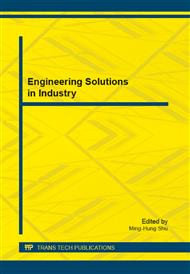p.3
p.7
p.11
p.15
p.19
p.23
p.29
p.33
p.43
Study of Effect of Diesel Fuel Properties on Pressure Wave Profile
Abstract:
High pressure (HP) fuel pipeline is one of the vital components of Combination Electronic Unit Pump (CEUP) fuel injection system besides pump and injector. Effect of four key fuel properties including density, viscosity, acoustic wave speed and bulk modulus on pressure wave profile has been investigated using a 1D viscous damped mathematical model. Wave equation (WE) based mathematical model has been developed in MATLAB using finite difference method. Dynamic variations of these fuel properties during fuel injection cycles have also been incorporated in mathematical model by utilizing empirical formulas. The results show that these four key fuel properties not only vary with the pressure during fuel injection process but also define the trend of pressure wave propagation inside HP fuel pipeline.
Info:
Periodical:
Pages:
19-22
Citation:
Online since:
October 2014
Authors:
Price:
Сopyright:
© 2014 Trans Tech Publications Ltd. All Rights Reserved
Share:
Citation:


